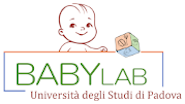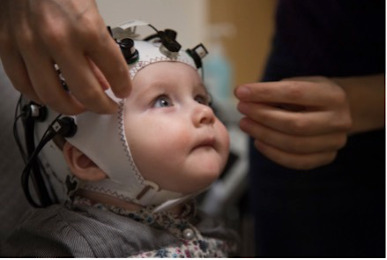BabyMindReader: le rappresentazioni neurali della prosodia alla nascita
Alla nascita i bambini hanno già molte abilità linguistiche e possono iniziare ad imparare qualsiasi lingua. Le ricerche degli ultimi anni hanno contribuito a formulare l’ipotesi che la prosodia sia la proprietà linguistica chiave che i neonati imparano prima della nascita e che li guida dopo nell’acquisizione della lingua madre. Nell’utero, infatti, i suoni raggiungono il feto attutiti dai liquidi e dai tessuti materni, perciò la lingua che il bambino sente prima della nascita porta con sè specialmente informazioni di tipo prosodico (intonazione, durata, tono) e non sui singoli fonemi. Questo progetto ha l’obiettivo di testare l'ipotesi che, appena nati, i bambini abbiano una precisa rappresentazione neurale della prosodia della lingua madre, e che sia possibile descriverla tramite la co-registrazione di due popolari tecniche di neuroimmagini, NIRS e EEG. Usando la registrazione simultanea di queste due tecniche, presenteremo ai neonati stimoli uditivi caratterizzati da prosodie diverse, una tipica, con cui i bambini dovrebbero già aver familiarizzato durante la gravidanza, e una atipica, sconosciuta al bambino. Applicheremo ai dati così ottenuti delle tecniche di analisi molto innovative, capaci di identificare i patterns di attivazione nel cervello in risposta ai due diversi suoni presentati, e dall’analisi di questi patterns saremo in grado di descrivere quanto il cervello del neonato sappia della lingua madre, e della sua prosodia, alla nascita.
BabyMindReader: neural representations of prosody at birth
At birth, babies already possess several linguistic abilities that allow them to start learning any language. Research findings on this topic contributed to formulate the hypothesis that the key property that infants start learning during gestation and that supports them in acquiring the native language is prosody. In utero, in fact, the sounds that reach the foetus are muffled, as an effect of the surrounding maternal tissues, therefore the language that the baby hears before birth carries most of all prosodic information, and not information on the single phonemes. This project has the goal of testing the hypothesis that, at birth, newborns possess a clear neural representation of the prosody, of the native language(s), and that it is possible to describe it thanks to the co-registration of two widely employed neuroimaging techniques, NIRS and EEG. Using the simultaneous registration of these two techniques, we’ll present babies with auditory stimuli characterized by different prosodic contours: one “typical”, that will match the prosody of the language that the baby has heard during gestation, and one “atypical”, that is unknown to the baby. We’ll analyse the data with sophisticated methods that can identify patterns of brain activation in response to the presented stimuli, and based on the results we’ll be able to describe how much the newborns brain already knows about their own native language, and about its prosody, at birth. Ricercatori: Jessiva Gemignani, Judit Gervain


